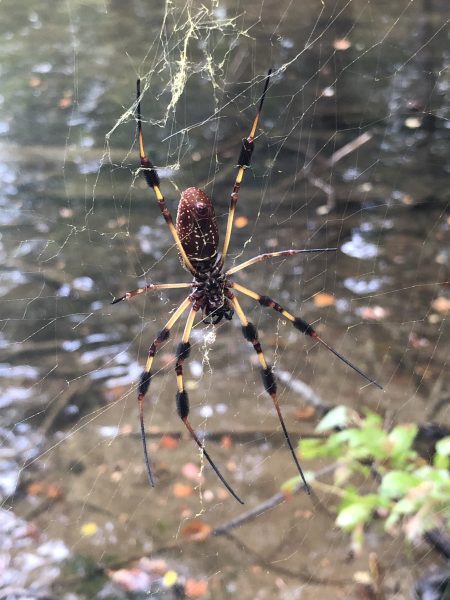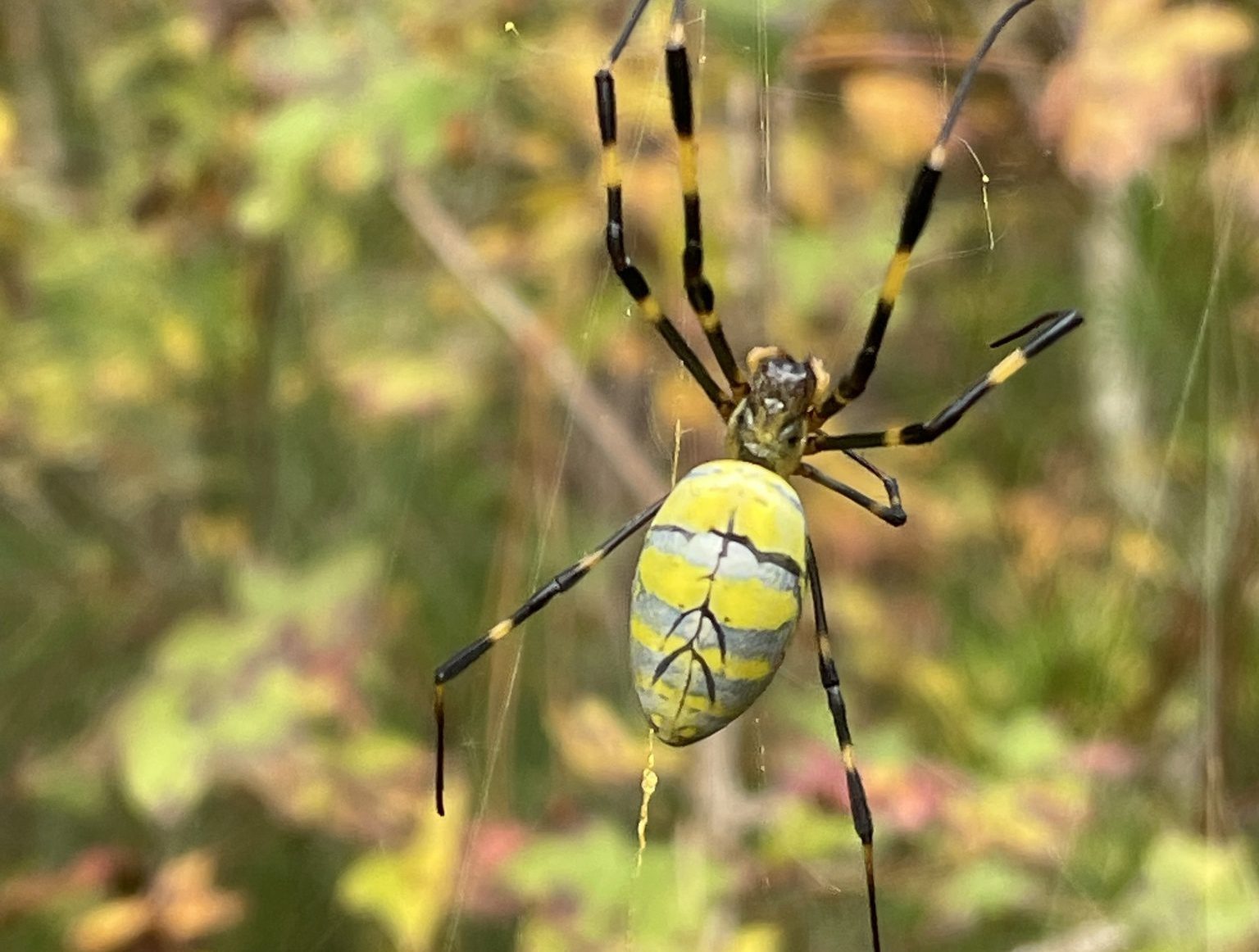Forestry & Wildlife

The Joro spider, Trichonephila clavata, is making recent headlines as people talk about its potential to spread around the United States. This spider, which is part of a group called the golden orb weavers, has a large, colorful body making people want to know more about it. Below are the top five things to know about the Joro spider.
1. Joro spiders have been in the U.S. for almost ten years.
Native to east Asia, Joro spiders were first seen in the U.S. in Georgia in 2014. It was an accidental introduction, possibly on plant material or in a shipping container. Since 2014, professionals have seen Joro spiders spread to North Carolina, South Carolina, and Tennessee.
There are currently no reports of the Joro spider in Alabama. However, they may be in the state and have not yet been observed or will show up soon given the state’s close proximity to Georgia. Joro spiders have been spreading about ten miles each year. With the help of strong weather events, they could easily make their way to Alabama.
2. They are part of a group of spiders called golden orb weavers.
People have probably seen an orb weaver and its large web while hiking or outside in the garden. The big spiders hanging out in the webs are the females, while the much smaller males and spiderlings are more mobile. Smaller spiders move through the landscape with a process called ballooning. They release a loose strand of silk and let it catch the wind or an electrical current.
Given the spiders’ unique movements, the idea that spiders are going to “drop from the sky” is not entirely inaccurate. However, people would never notice a tiny spiderling ballooning through the air. The much larger adult females remain in their webs and have limited mobility, so people will not have giant spiders dropping from the sky into their backyards.

Figure 1. Golden silk orbweaver, Trichonephila clavipes, currently in Alabama.
3. There is no evidence Joro spiders are negatively affecting ecosystems.
When nonnative species arrive to the U.S., they can displace native species or disrupt ecosystem functioning. If a nonnative species has negative environmental, economic, and/or human health impacts, it’s considered an invasive species. While the Joro spider is nonnative, there is currently no evidence that it is harming native species or their environment. This may change as they spread further, but professionals already have established populations of other golden orb weavers that are not a pest. In fact, the golden silk orbweaver (Trichonephila clavipes) is well-established in Alabama (figure 1). They are abundant in the late summer/early fall and make large, golden webs that help catch nuisance insects.
4. Joro spiders are not dangerous.
Like most spiders, the Joro spider has venom, but this doesn’t make it dangerous. Their mild venom can only be introduced through their bite, which rarely happens. Orb weavers use their fangs and venom to hunt prey. Their fangs are well-adapted for the small, soft bodies of insects but not the skin of humans or pets. The last thing that these spiders want to do is waste time trying to bite humans.
5. No management is necessary.
While no management is necessary, keep your eyes open to avoid walking through a very sticky web. If you do find a large orb weaver in your yard and want it identified, consider submitting a photograph to the “Is this a Joro spider?” project at iNaturalist.org. This will not only help you find out what it is, but will also be a contribution to citizen science efforts.
Featured image: Joro Spider (credit: Pam Overmyer)

